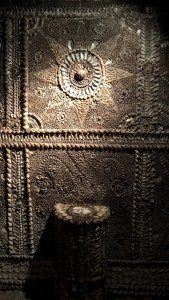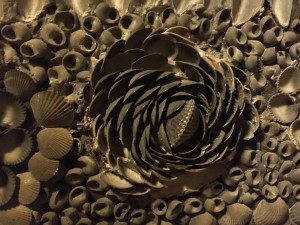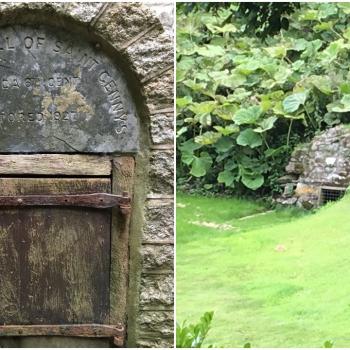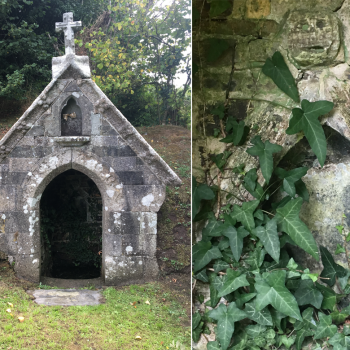
My thoughts on the Shell Grotto
Having visited the Shell Grotto on a number of occasions, I have developed my own thoughts and feelings about it. Its compact size and specific design, which lacks any practical facilities and seems be specifically intended to evoke a feeling of mystery, suggests to me that it is a modern rather than ancient construction. Additionally, while some have argued that the Gothic archways were designed entirely for the practical purpose of giving them load-bearing strength, I also consider them a clue as to the date of the Grotto – Gothic revival architecture was popular in the 18th and 19th centuries.
But, if the Shell Grotto is a relatively modern structure, there are a lot of questions that need answering. Firstly, why wasn’t it constructed in a more obvious place for a folly? It was built under farmland rather than a large estate, which isn’t typical of follies. What’s more, why are there no records at all of its construction? This would make sense if the folly had more ancient origins, but in Georgian/Victorian times, this seems unthinkable for a project of this scale. As the Shell Grotto’s official website puts it,
“The building of the Grotto would have been a mammoth task: the excavation of the passageways, transporting 4.6 million shells to the site, sorting those shells and enlisting enough labour to create the mosaic. How to do all this on rising open ground, next to a busy track without anyone noticing? Every townsperson would have had to be in on the secret and not breathed a word about it.”
Not to mention that there aren’t any architectural plans or designs on record for the Grotto.
And that’s why, even though I instinctively feel that the Shell Grotto is of modern origins, I am still not 100% confident in this belief.

One thing I do feel fairly confident about is that it was intended for spiritual purposes. The designs on the walls, the shrine-like alcove, the mysterious plinth and the very specific layout all suggest some form of worship or ritual intention. What’s very interesting is that if religion was involved in the construct of the Grotto, that religion probably wasn’t Christianity, at least in a traditional sense. While some of the architectural features do suggest a church, the mosaics definitely do not. There are no crosses or other symbols with typical Christian associations – the sun, star and tree motifs would suggest Pagan religion far more strongly. The abstract nature of the designs might even hint at Islamic influence.

My personal theory is that most features of the Grotto, including the shell mosaics, were (somehow) constructed in secret around the 18th century (perhaps utilising an existing mine or crypt) under the direction of someone of considerable wealth and imagination – and a considerable love of mystery cults and esoteric beliefs. That person was highly educated and fascinated by exotic Asian designs, and they wanted to explore alternative forms of spirituality to traditional Christianity: Spirituality influenced by ancient European paganism and Eastern religions. They may well have been a Freemason or similar, and designed this Grotto for collective, secretive worship.
Whatever its purpose, the Shell Grotto holds a particular fascination among the Pagan, New Age, occultist and magical community. Seances were held there in the 1930s to try and contact the spirits of the builders, and it even has its own ghost, the Blue Lady. The Friends of the Shell Grotto official website lists Coven of the Bright Isle and the Boscastle Witchcraft Museum among its links, indicating its members’ Pagan connections.
Eventually, the techniques may exist for us to accurately date the Shell Grotto at minimal expensive or damage to the structure. I hope they do, as no matter what is revealed, it will help us to understand the culture from whence the Grotto came, be it pre-Christian or Medieval or Victorian. But until then, it is certainly enjoyable to speculate and share the wide variety of theories surrounding the Grotto. If you find yourself in the south of England, why not visit the Shell Grotto yourself and come up with your own ideas – who knows, perhaps you can solve the mystery!
References and Further Reading
R. F. LeGear, “The Margate Shell Grotto.” The Kent Archaeological Society paper no. 023
The Shell Grotto Margate official website
The Friends of the Shell Grotto official website
Wikipedia, “Shell Grotto, Margate”
















